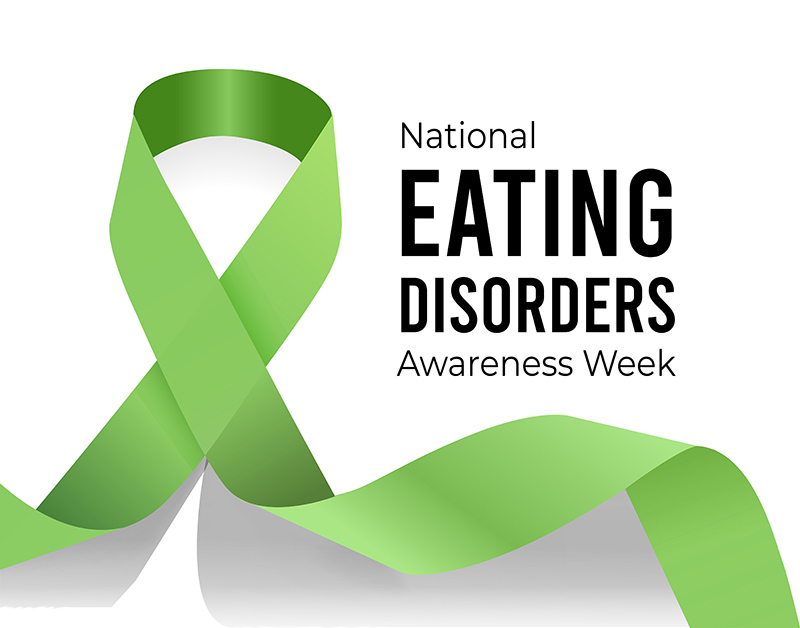Cleverly termed NEDAwareness Week by the National Eating Disorders Organization, this yearly campaign educates people about the grim realities that surround eating disorders. And so, in the course of the week spanning February 21st to February 27th, offer a select menu of support initiatives aimed at sparking up hope and visibility to the larger collective affected by this gruesome mental and physical malady.
Eating Disorders Fact-Myth Dissonance
Now, an eating disorder may be a simple affair to understand at point blank; the wording seems to explain it all. But far from it! Surrounded by deep bred myths and misunderstandings, this is first and foremost a mental illness. Defined by the American Psychiatric Association as “behavioral conditions characterized by severe and persistent disturbance in eating behaviors”, they carry a bag of “associated distressing thoughts and emotions”. Varying in severity all the way to very serious, eating disorders “affect physical, psychological and social function.”
So, once we have established that they are extremely serious mental illnesses, here’s a few other important facts about eating disorders:
- All considered, eating disorders can affect up to 5% of Americans at any given time. And up to 29 million Americans have had an eating disorder at some point in their lives.
- They often take place alongside other psychiatric disorders: mood and anxiety, obsessive compulsive, and alcohol and drug abuse problems.
- It’s not just a women’s issue. It affects both men and women.
- They are NOT fads, phases or lifestyle choices, especially when we speak about female teens and tweens.
- You cannot just get over it by choosing to eat and live healthily. This is a complex illness.
- They are life consuming, more often than not impairing carrying a normal life.
- Understandably, eating food is that much more complicated for those affected by it.
- Someone dies every 52 minutes from an eating disorder in the US.
- Life-threatening: anorexia nervosa, for example, has the highest death rate of any psychiatric disease—up to 12 times that of all other causes of death of females aged 15-24. With treatment, mortality rate falls to 2-3%. Without it, it hikes up to a whooping 20%.
- Best of all, there is hope: Recovery is possible.
Eating Disorder Types
Anorexia Nervosa: Basically, self-starvation and its resulting weight loss. Can be restrictive or the binge-eating-purging type.
Bulimia Nervosa: Binge eating, which invariably denotes shame and embarrassment, followed by purging alternatives, such as fasting, vomiting, misusing laxatives, or compulsive exercising.
Binge Eating Disorder: The same as above without the purging.
Avoidant Restrictive Food Intake Disorder (ARFID): Extremely picky eating resulting in the persistent failure to meet nutritional minimums.
Other Specified Feeding and Eating Disorder: All other disorders that severely affect or outright impair family social or work function.
Pica: Eating only stuff that has no nutritional value.
Rumination Disorder: Repeated regurgitation, chewing and re-chewing, swallowing and re-swallowing, and spitting out of food.
Hope
See the Change, Be the Change is the motto and the war cry of this year’s NEDAwareness Week. It is an open invitation to see the positive side by recognizing change within the eating disorders field. It is also a wakeup call and a prompt to come and join and become the change through personal and legislative advocacy, awareness, and community building. There is a Contact Help Line in the form of a Chat at nationaleatingdisorders.org and much more to do and learn. Start there.
Sources:
https://www.nationaleatingdisorders.org/get-involved/nedawareness
https://mhanational.org/blog/7-important-facts-about-eating-disorders
https://www.psychiatry.org/patients-families/eating-disorders/what-are-eating-disorders


